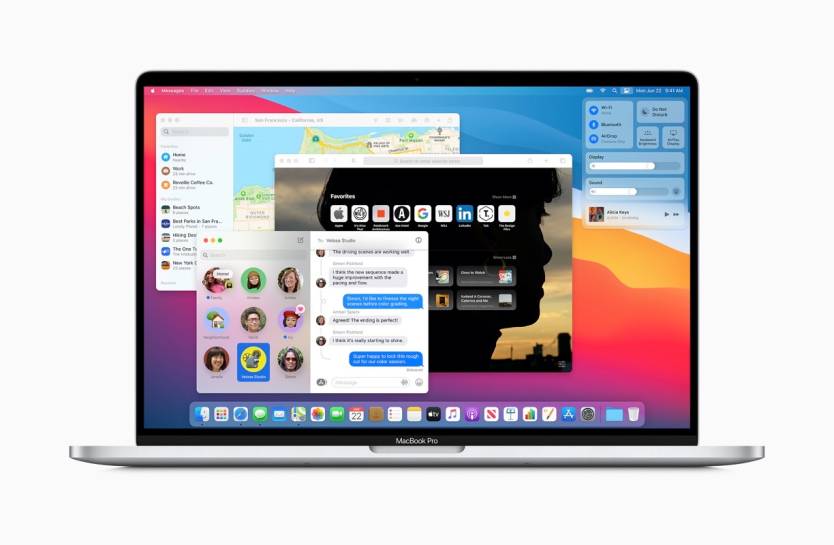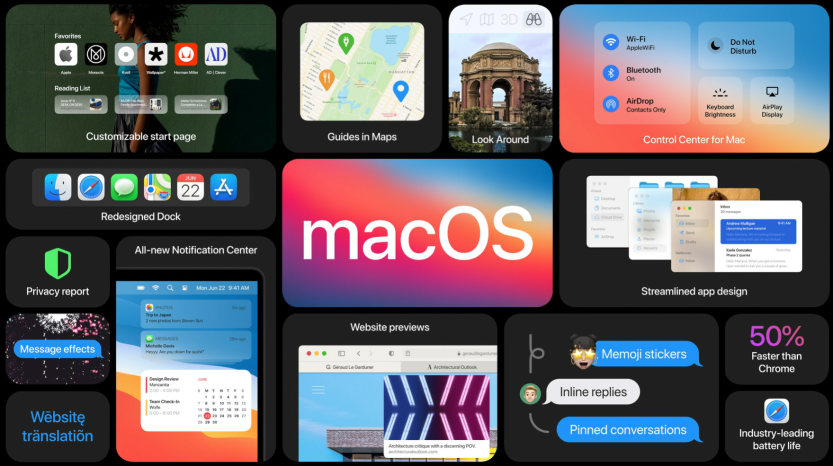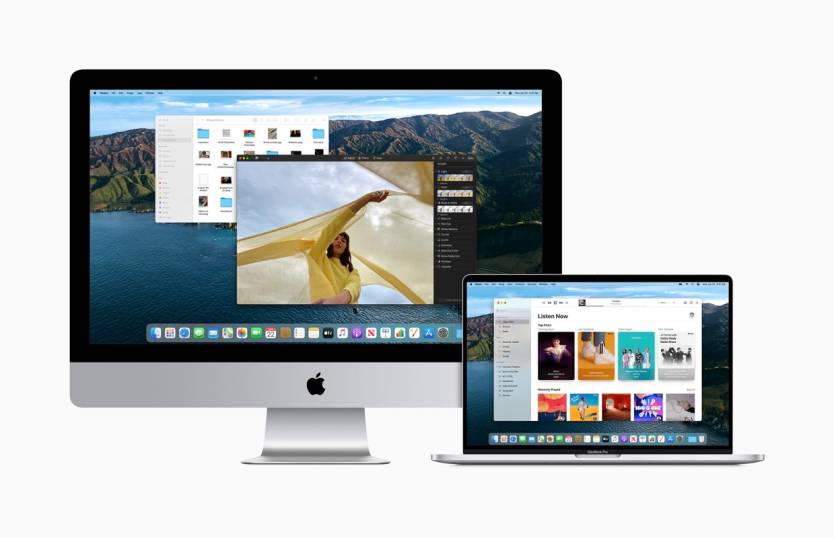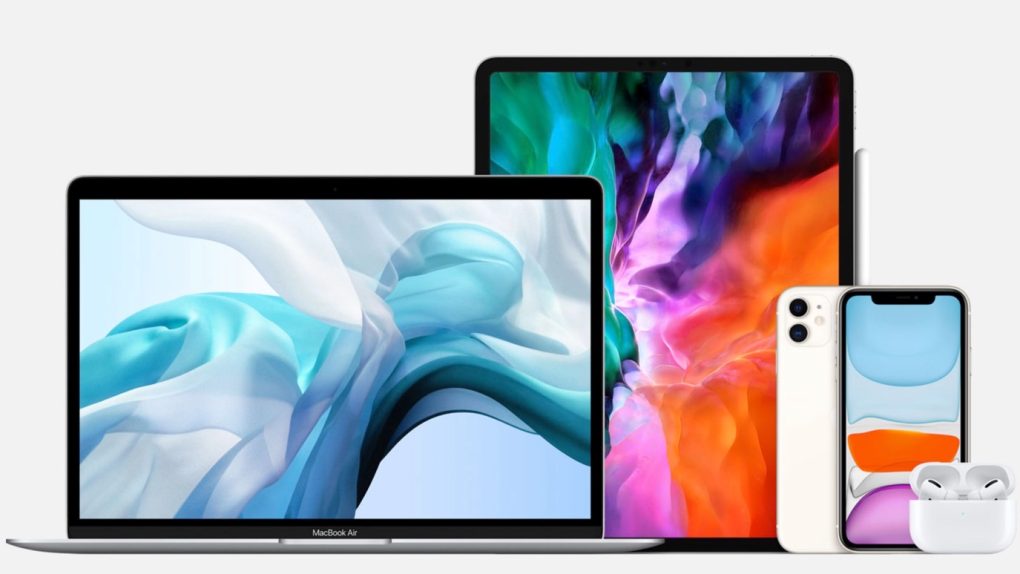- The macOS Big Sur design change isn’t about turning the Mac into a touch-less iPad or unifying the two platforms.
- The unified interface across iPhone and Mac paves the way for the next generation of computing, one that might not be dominated by the iPhone.
- Apple is making all the moves that will allow it to “kill” the iPhone with a brand new product of its own making, rather than risk having a competitor come up with the same concept.
Apple making the switch from Intel to its own silicon for the entire Mac lineup was easily the most exciting thing that happened at WWDC 2020 earlier this week. We knew it was coming, so it wasn’t necessarily a surprise. The real shock was macOS Big Sur, which received its most significant redesign in years. The change is so massive that Apple finally moved away from its macOS 10.x numbering scheme. Big Sur is macOS 11, a change Apple quietly teased on stage during the ARM segment — but Craig Federighi never mentioned the number of during the event.
Once you get the Big Sur upgrade, the Mac will have a user interface that’s nearly identical to iPhone and iPad. Some people might not appreciate the fact that macOS is losing its personality, or that Apple is merging Mac and iPad while insisting that’s not the plan. But in the grand scheme of things, unifying the user interface and user experience makes sense. It’s bigger than the Mac or iPad or iPhone. I suspect that Apple needs Mac’s help to “kill” the iPhone in the coming years (I don’t mean that literally). And the Mac won’t go anywhere when it happens.
To sum up, Big Sur Macs will look almost exactly like iPads when it comes to the overall user interface. The icons and many of the Apple apps will look the same. Even the Control Center will look like it was lifted straight from iPadOS. The only thing missing from the Mac is the touchscreen, but that’s something that Apple said it would never do. It made that clear just last year when it confirmed the Mac and iPad won’t be merging.

Later this year, the Mac will run on ARM, just like iPhone and iPad, which means it’ll also get access to iOS apps. Separately, iPadOS is becoming more like the Mac. The tablet is practically a laptop when you add Apple’s Magic Keyboard to it. It supports mice and external keyboards, and it does its own form of multitasking.
But despite the Big Sur surprise, Apple will keep making Macs for some time to come. As good as iPads are, Macs are better, and some people will always need them. The significant design change, however, teases something entirely different — Apple is preparing for the imminent future of computing.

When Steve Jobs announced the iPhone in 2007, it shattered the smartphone paradigm. The iPhone virtually killed BlackBerry, Windows Mobile, Palm, and Symbian right then and there. Android was all that remained, and that’s just because Google was quick enough to ditch its BlackBerry replica and replace it with a touch-first version of Android. Apple has launched several major products since then, including iPad, Apple Watch, and AirPods. None of them were as big as iPhone, though all of them redefined their respective industries. The iPad has no real rival, the Apple Watch is the smartwatch, and everyone is making AirPods rivals right now just because Apple wanted to remove the 3.5mm headphone jack from the iPhone. Yet all of them are part of the iPhone ecosystem, Apple’s most important moneymaker ever.
Killing the iPhone is no small task, and it’s something nobody but Apple can do. Many have tried and failed to come up with an equally iconic smartphone in the past 13 years.
No company would want to see its product disappear, of course, so why would Apple do anything to endanger the best product it ever created? Well, there’s always the risk that someone will come up with the gadget that replaces the iPhone, and that’s why Apple is looking to beat everyone to the punch.
Like I said before, the iPhone isn’t going away anytime soon. When I say “kill,” I mean it figuratively. There will come a time when it won’t matter what the iPhone looks like, how big it is, how long its battery lasts, or whether it can fold. In the not too distant future, the iPhone may be the tiny gadget in our pocket that delivers more sophisticated ways of communicating with others, enjoying entertainment, and working. But we might not feel the need to take it out as much as we do now. We might not even want a screen on it. That’s because a future version of the rumored Apple Glasses, the augmented reality (AR) wearable that Apple will reportedly launch soon, will handle everything. The first-gen Apple Glasses won’t be as exciting, however.

Rumors say the first-generation Glasses will rely on a constant connection to the iPhone, and they may be limited in functionality. Chip miniaturization, increased energy efficiency, and speedy wireless connections will turn the AR Glasses into a more formidable iPhone companion, which is what has happened with the Apple Watch over the past five years. The Watch has a limitation the Glasses won’t have to deal with, and that’s screen size. The Glasses will project all the information we need from apps right in front of us, on a virtually infinite screen laid over our vision. We could be interacting with notifications, email, apps, and the real world all at once. We’ll be able to read and respond to texts, make calls, use apps, and watch picture-in-picture videos all without taking the iPhone out of our pockets, and without anyone snooping on our screens.
Whatever operating system version these Glasses will run on, they’ll have a UI that will feel incredibly familiar. That’s because the same UI will be used on the Mac, iPhone, and iPad by the time the Glasses are available. It makes sense to have the same UI elements regardless of device. Notifications, calls, texts, apps — they should all feel familiar from the moment you get a new Apple device. That’s what the Mac can do for Apple right now.

Give a Big Sur Mac to an iPhone user who has never touched a Mac before, and he or she will instantly recognize the operating system. The apps will feel familiar, and the settings will be essentially the same. The learning curve will be a lot shorter. The same goes for a Mac user who has never had an iPhone or iPad before. Big Sur will teach them everything they need to know about the iPhone and iPad UI. Add AR Glasses to the mix, running a similar UI, and an iPhone or Mac user would know how to interact with and use the glasses from day one.
There will be particularities that need further study. The Mac can run apps that are not available on iPhone and it handles more complex multitasking. The iPad can use a pencil and has a touchscreen display that dictates the way you interact with it. The iPhone is all about touch and gestures. The AR Glasses could be able to read intent in your eyes and translate it into actions. It could interpret hand gestures too. But at the core, there will be a common design language for everything. The same icons will appear everywhere, the same widgets, and the same Siri disc.
Apple’s significant Big Sur redesign isn’t just about turning its computers into devices that can run iPhone apps, or offering a touch-less iPad experience. It’s not about unifying the hardware. It’s about setting the foundation of the next-generation of Apple computing that could involve a variety of smart devices that run in unison with the ultimate wearable: AR glasses.

Other innovations that Apple has introduced, like the AirPods’ ability to seamlessly switch between audio sources, could come to the glasses as well, allowing the user to pair the glasses with an iPhone, iPad, Mac, TV, smart home, or smart car. Support for cinema-like video could also benefit glasses, assuming a future version will come with built-in sound. Even something simple like App Clips could be very useful on a device like the glasses.
Fast transfer speeds like 5G and the ultra-fast short-distance Wi-Fi standard that might be coming with the iPhone 12 later this year will further improve the exchange of information between Apple devices. The user will be able to manage a combination of Apple computers effortlessly, with the glasses being the central element of one’s Apple setup. Then there’s Siri, which will play a pivotal role in the future of Apple computing, especially on the glasses.
I’m speculating based on what Apple announced this week, and I have no way of knowing what’s in the cards for the iPhone or the Mac in the coming years. But I do know that Apple can’t afford to be second in AR, considering the huge advantage it has over competitors when it comes to integrating hardware, software, and user experiences. That’s why it’s lining up all its devices already, so that when the time comes, the transition from an iPhone-first mentality to AR-first one will be as smooth and profitable as possible.








